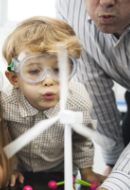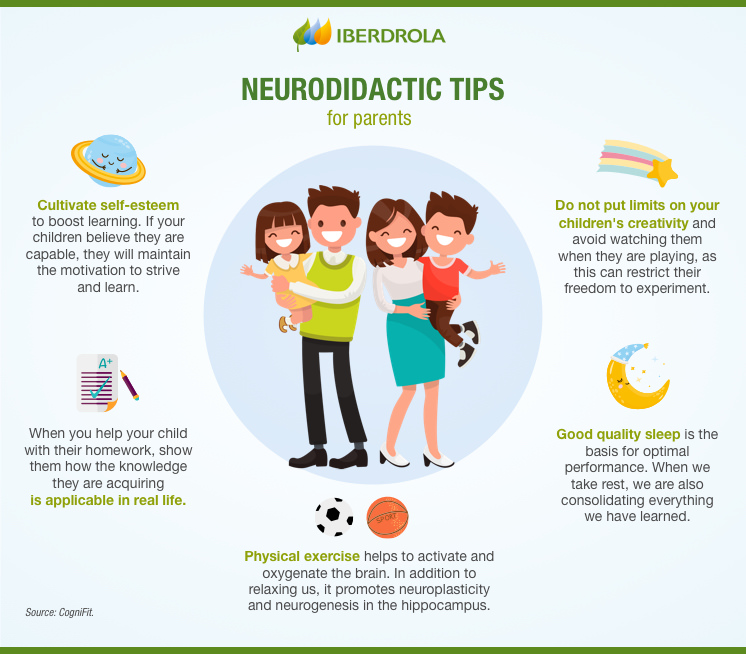What is neurodidactics
Neurodidactics: the science that could change education
High performance Training Professional career
The outlook for teachers around the world today is highly complex. Every day they face the challenge of engaging students who are different from those of the past and do not respond to the same stimuli, partly due to the influence of new technologies. To capture their attention, it is necessary to understand how the human brain works during learning, and this is where neurodidactics comes into play.

"We cannot continue teaching each new generation of children like the previous one," says Scottish historian and educational expert, Niall Ferguson. And like him, many other figures in the educational field believe that education, in the actual technological age, must change if our purpose is to successfully face the task of winning over the students of today. The question is: How do we do this? This question is a difficult one, and that is where neurodidactics comes into play, as it is presented as a promising alternative to transform education, quite literally, from head to toe.
What is neurodidactics and how can it contribute (benefits)
Using archaic methodologies, such as learning by rote, does not seem the best way to learn today. This is told by neuroscience, which is the set of scientific disciplines that study the nervous system to better understand the mechanisms that regulate the control of nerve reactions and brain behaviour.
Thanks to neuroscience applied to education, we know that motivation and challenges are able to activate certain areas of the brain that help to the learning process. We also understand that we learn more and better in interaction with other people than individually, and that free and natural experimentation fosters skills and competencies, among other things. From this knowledge, and skills that are provided by education and psychology, appears neurodidactics, which is also called neuroeducation, a bridge between neurology and educational sciences in which educational psychology also plays a fundamental role.
Neurodidactics is developing and applying new methodologies in order to optimise classroom learning. CogniFit, a company founded by neuroscientist Shlomo Breznitz, states that for educating and learning better, we must start to apply in schools the new discoveries of how our brain learns. They mean that we do not learn by memorising, but by experimenting, getting involved, and practising with our hands.

Disruptive education
Disruptive education for meeting the challenges of the future.

Flipped classroom
A methodology to transform learning.

Reskilling and upskilling
Work training in the digital transformation era.

What are nanodegrees?
Online courses that will change your life.
The keys to neurodidactics
Neurodidactics is based on four widely researched and proven certainties:
 Brain plasticity
Brain plasticity
The brain possesses adaptive capacity throughout its life and, with the right stimulation, it is able to generate new neuronal connections.
 Mirror neurons
Mirror neurons
This group of nerve cells in our brain is activated when we observe how other people perform an action. It allows us to not only, imitate behaviour, but to also understand what is happening to the people around us.
 Emotions
Emotions
The brain needs to become emotionally excited in order to learn. Therefore, all learning linked to emotions will be more productive. In addition, it has been found that novelty, surprise, curiosity and creativity feed emotions and facilitate a more enduring and higher-quality learning.
 Multisensory learning
Multisensory learning
The brain is more able to learn if it is stimulated by the five senses. That is the same to say that information is not only received through one sense — sight or hearing, for example — but through multiple senses.

Neurodidactics in the classroom (methodology)
In his article, 10 Most Effective Tips For Using Brain-Based Teaching & Learning, the prestigious sociologist Eric Jensen shared a group of tips of how to get the most out of the brain during the learning process and thus introducing neurodidactics in classroom:
 Physical activity and recreation, if are done voluntarily, it reduces stress, increases neurogenesis and stimulates learning.
Physical activity and recreation, if are done voluntarily, it reduces stress, increases neurogenesis and stimulates learning.
 Student's social conditions influence their school life and their academic results.
Student's social conditions influence their school life and their academic results.
 The brain is a plastic organ, so neurogenesis can be induced through developing cognitive and emotional skills.
The brain is a plastic organ, so neurogenesis can be induced through developing cognitive and emotional skills.
 Acute and chronic stress has a negative impact on behaviour and learning.
Acute and chronic stress has a negative impact on behaviour and learning.
 Each brain is unique and matures differently, so a differentiated education must be offered based on the abilities and interests of each student.
Each brain is unique and matures differently, so a differentiated education must be offered based on the abilities and interests of each student.
 Excessive content and long teaching times saturate memory, hindering the learning process.
Excessive content and long teaching times saturate memory, hindering the learning process.
 Artistic training has a positive impact on learning, both in cognitive and emotional and social skills too.
Artistic training has a positive impact on learning, both in cognitive and emotional and social skills too.
 Emotions influence learning and schools must, therefore, teach the appropriate emotional and social skills in order to improve student performance.
Emotions influence learning and schools must, therefore, teach the appropriate emotional and social skills in order to improve student performance.
 Delays in learning can be improved and even overcome thanks to the plasticity of the brain, if appropriate compensatory educational programmes are used.
Delays in learning can be improved and even overcome thanks to the plasticity of the brain, if appropriate compensatory educational programmes are used.
 Memory is not fixed but malleable, so to retain the learning requires continuous practice.
Memory is not fixed but malleable, so to retain the learning requires continuous practice.





